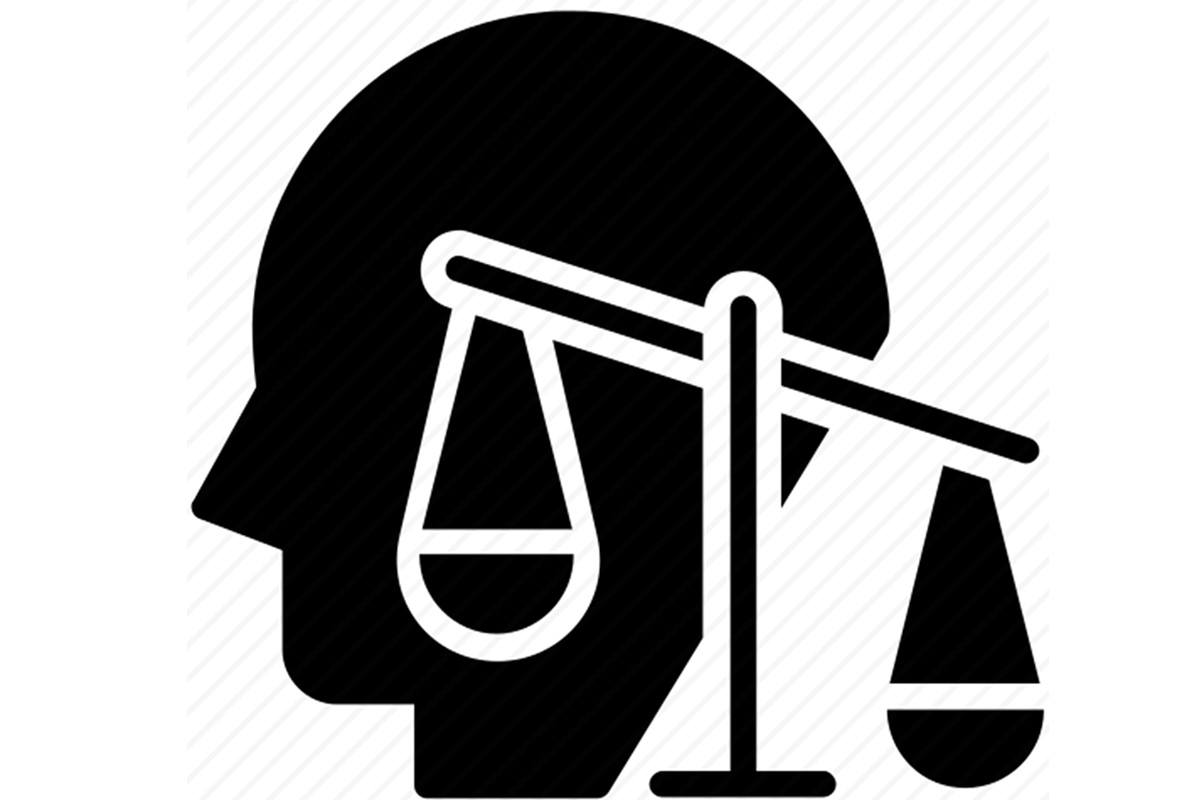
Prafulchandra Natwarlal Bhagwati (December 21, 1921 - June 15, 2017), the eminent jurist and celebrated Chief Justice of India who pioneered the concept of public interest litigation (PIL) and judicial activism into the Indian judicial governance system, had once said in one of his unique judgements:
“Law is not a mausoleum. It is not an antique to be taken down, dusted, admired and put back on the shelf. It is like an old but vigorous tree, having roots in history, yet continuously taking new grafts and putting out new sprouts and occasionally dropping dead wood. It is essentially a social process, the end product of which is justice and hence it must change with changing social values. Otherwise, there will be estrangement between law and justice and law will cease to have legitimacy.”
(Cited from https://en.wikiquote.org/wiki/P.N._Bhagwati)
Justice Bhagwati also emphasised that to avoid this “estrangement between law and justice” and to ascertain law entails legitimacy, it is extremely important that judicial integrity is embedded into the judicial system. If the public faith in country’s judiciary and judicial system is eroded, if the courts lose their credibility, and if the people start criticising and condemning the judges’ ethical behaviours in their private conversations but loud enough to be heard in public debates as well, we know that there is a deep deficit of judicial integrity.
Judicial integrity has been more clearly defined in terms of “six values” that have been espoused by what is known as Bangalore Principles of Judicial Conduct. These principles, that were endorsed by The Judicial Integrity Group’s second meeting held in Bangalore in 2006, have largely shaped the ethical aspects of how judges and judiciaries should perform, how their conduct can be explained as being “appropriate” and “acceptable”, and how judiciary should be able to enforce such conduct. The Group, which was formed in 2000 as an “independent, autonomous, not-for-profit and voluntary entity” was seen at its commencement as an informal group of Chief Justices or senior judges with proven expertise, experience, passion and integrity.
Six Values
The Bangalore Principles propounded six values of judicial integrity, which were subsequently endorsed by three principal agencies of the United Nations – the Commission on Human Rights, the Commission on Crime Prevention and Criminal Justice, and the Economic and Social Commission. These values are independence, impartiality, integrity, propriety, equality, and competence and diligence. While administering justice, judges are not only required to be independentin relation to society and particular parties to the dispute and also free from inappropriate connections with the legislative and executive branches of government, they must also appear to be so in the eyes of a neutral observer. They should also not be holding any bias, prejudice, economic or other interests and have been involvedin any controversies. Likewise, integrity which means judges should be “above reproach in the view of a reasonable observer” for their conducts and behaviors is the key to restoring public faith in judiciary. Judges should always avoid “impropriety” and also appear to have done so before the public eyes, because they are always under constant public scrutiny. They cannot be expected to accept cases involving their relations and relationships both personal and professional that can lead to reasonable suspicion about their impartial judgments in the cases in question. The other equally important element of judicial integrity is equality. Judges should not discriminate the parties in disputes based on gender, religion, race, colour, nationality, caste, disability, marital and socio-economic status, etc. It is to be ensured that all are treated equal once they enter the doorstep of the judiciary anticipating fair and impartial trial. And last but not the least, judges should always be effortful for enhancing professional competence and diligence by earning and sharpening their knowledge, skills and aptitude and must always worry to improve their personal qualities also.Nepal Scenario
Now, what is the actual condition of Nepal’s judges and judiciary against this backdrop? It is heartening to note that Nepal has also been a part of The Group as it has attended its several meetings and deliberations. Nepal’s constitution has provided an inalienable right to public interest litigation through writ petitions which are handled by the apex Supreme Court applying its extraordinary jurisdiction. Nepali judges have had their imprint on the evolution of judicial activism as the verdicts they have passed have often set a remarkable history, such as in the controversial cases of the parliament dissolution the first of whose kind was when Bishwa Nath Upadhya was the Chief Justice during 1991-95. Justices like Ram Prasad Shrestha, Kalyan Shrestha and Sushila Karki, to name just a few, have earned fame due basically to their verdicts on PIL involving highly contentious political, constitutional and ethical (corruption) cases. Justice Karki had even had to face the impeachment motion in the parliament for the bold position she took over the police IGP appointment to the utter displeasure of the then political parties in power, the Nepali Congress and NCP (Maoist Center), which however was subsequently withdrawn following massive public pressure and resentment.Their verdicts and the consequent precedents have contributed to restoring judicial integrity in the judicial system and improving judicial good governance in the country.Recent Optimism
Let us look at the most recent court verdicts that came in a series in the last couple of weeks in the light of judicial integrity. I pick five such verdicts and decisions by the Supreme Court and particularly by its five-member Constitutional Court. The first and foremost, the Supreme Court nullified the expansion of the cabinet done by the PM after the House was dissolved, on the ground that it was “unconstitutional to do this because a PM who is no longer a member of the House of the Representative due to its dissolution stands as a caretaker PM who is bereft of such businesses including cabinet reshuffling”. The Interim Order issued to this effect caused ipso facto the removal of as many as 20 cabinet ministers allowing only four-plus-PM to remain in the government. While this “unexpected” verdict has led to a virtual stand-still in the government, the protagonists have admired it as being “historic” for protecting and preserving the constitution and restored constitutional or judicial supremacy. Some observers are bemused whether this is actually a glaring example of judicial activism involving the court in political matters beyond its jurisdiction. But there is a very thin line of demarcation between “judicial activism” and “judicial integrity leading to judicial supremacy” in a politically fluid situation like that of Nepal at present. Meanwhile, the court has earned widespread accolade for its decision to abrogate the cabinet decision of exempting ambassadorial candidates from requiring minimum academic qualification of a graduate’s degree if they are ex-ministers. This was unanimously welcomed as a course correction of the executive’s unruly governance style by the judiciary. The third relates to an Interim Order on the Citizenship Ordinance. The importance of the decision does not really lie in explaining the merits and contents of the Ordinance but the context and rationale against which it was challenged. The court aptly interpreted the impropriety of the Ordinance saying that an ordinance is normally promulgated only if there is an acute urgency to do something immediately when there is no parliament session in progress, but there was no such urgency in the present case as the Bill to that effect had been lying pending in the House for the last three years, testifying to utter negligence and reluctance on the part of the government to move it forward securing political consensus, considered inevitable because citizenship has always been a controversial matter in Nepali political sociology. The court was also blunt in accusing the government of “bringing the Ordinance out just a day after the dissolution of the House, which proved it was only to serve its vested political interest and create comfort for the regime”. It further alleged that the government by issuing this Ordinance was breaching the principle of separation of power. The verdict had used the word “pseudo-legislation” to denote that the Ordinance has come out through a short-cut route by evading parliamentary deliberation. The verdict also put a powerful question: “Just in case the Ordinance is not endorsed by the Parliament within 60 days after it assumes its session, would not it create serious constitutional complications regarding the citizenship certificatesthat will already have been issued to the people as per the Ordinance?” The verdict, though extremely unpleasant to the governmentwhich wanted some political dividend by addressing this hotly contested and long-overdue popular agenda, was music to the ears of its opponents who were protesting the current regime’s inclination to the “rule by ordinance” undermining the “rule of law”. Many observers have taken it as a major milestone in the country’s history of judicial governance. In another separate ruling, the court ordered for nullifying the decision of the ruling UML’s so-called “General Convention Organising Committee” to expel four floor-crossing members of the Karnali Provincial Assembly, saying, “the law does not recognise a mechanism which has not been legitimised by the relevant Act pertaining to Political Parties, 2073 BS”. This was another audacious decision of the court in the light of judicial activism. Meanwhile, the court rejected the government’s appeal to “vacate” the interim order saying it was fully in accordance with the spirit of the constitution. In the similar vein, Chief Justice Cholendra SJB Rana resolved a contentious issue of who will be picked in the Constitutional Bench and how, ending growing mutual disrespect between the bar and the bench regarding qualification and disqualification of the judges to be included for the hearing by the bench. The court effected an amendment in the Constitutional Bench Rules recognising the seniority order of the sitting judges. This was also seen as a good step for improving judicial governance in the court proceedings.Selective Integrity
Critics argue that though the Supreme Court’s recent decisions have given way to hope and optimism regarding judicial integrity and governance, there is still a selective approach adopted in picking the cases for passing verdicts. For example, the controversial Ordinance pertaining to Constitutional Council Act Amendment has not been touched upon by the court while explaining the impropriety of the ‘rule by ordinance’. This Ordinance, like the one on citizenship, is also not seen being urgently important in terms of immediateness, nor does it meet the common procedural norms of ordinance promulgation. For instance, the same Ordinance was issued some six months ago and was withdrawn upon vehement protest from the civil society and opposition political parties. The fact that there are already 17 writ petitions pending in the court suggests that this has not received due priority in the court. The opponents to the Ordinance argue that it violates the constitutional spirit of check and balance among the three state organs as well as the opposition leader in the lower house of the parliamentby effectively curtailing their representation in the Council’s meeting which sits for recommending the appointees for various constitutional bodies including ambassadors.Some have even argued that the reason why hearing has been delayed on the writs against this Ordinance is that the Chief Justice himself has sat in the meetings of the Council and recommended his nominees for constitutional positions. This ethical conflict of interest, if true, is a serious matter that comes in the way of ensuring judicial integrity in the court and harms good judicial governance in the country. The sooner the Chief Justice and the Supreme Court come clean of this deep-seated doubt in some critics’ minds, the better it will turn out to be for restoring the image of judiciary and the judges. After all, Nepal’s Supreme Courtis the last bastion of hope for preserving and protecting the country’s constitution, the ultimate custodian of democracy, justice and people’s fundamental rights, and also the insurer of judicial integrity and judicial good governance. Applying all six values of judicial integrity, including “equality” is important in this respect.
Published Date: July 5, 2021, 12:00 am
Post Comment
E-Magazine

